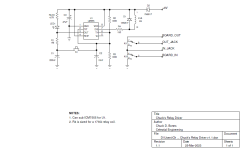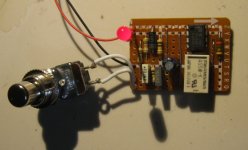Chuck D. Bones
Circuit Wizard
This is a variation on the 555-based Relay Bypass Board sold here. This circuit drives a 5V relay, or any other coil voltage up to 9V. No regulator is required. I made the best use of the output pins by using the DISCHARGE pin to drive the relay. The DISCHARGE pin has higher current sinking capability than the OUT pin. This circuit can be used stand-alone, or integrated into a pedal circuit board.






